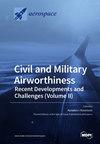Numerical Simulation on Primary Breakup Characteristics of Liquid Jet in Oscillation Crossflow
IF 2.2
3区 工程技术
Q2 ENGINEERING, AEROSPACE
引用次数: 0
Abstract
In order to understand the breakup characteristics of a transverse liquid jet flow in an actual combustion chamber, a numerical study was conducted using the Volume of Fluid (VOF) method combined with grid adaptation technology. The study focused on the primary breakup characteristics of liquid jets under the conditions of a steady and oscillating air crossflow. The simulated mediums were set to water and air. The research findings revealed that fluctuations in the incoming gas velocity can influence the development speed of surface waves and the mode of jet breakup during the initial stage of jet development as compared to the steady condition. In both conditions, the surface waves were initially observed to appear within 1/4 T–2/4 T. The surface wave of the jet develops faster under steady conditions because the average velocity of the steady flow is higher than that of the oscillation flow during this stage. As a result, the fragmentation of the jet is primarily influenced by the surface wave. Under an oscillating flow, the rear of the jet begins to break up earlier due to the slower development of surface waves. The velocity of the oscillating air inflow increases over time, and the speed of surface wave development also increases, gradually leading to the dominance of surface-wave-induced jet breakup. In the second stage of air inflow oscillation, an “up and down slapping” phenomenon occurs at the tail of the jet. Additionally, increasing the air inflow velocity leads to a longer jet breakup length and a higher number of droplets near the jet column. Surface waves are observed on both the windward and leeward sides of the jet. The penetration depth of the jet fluctuates with changes in the crossflow velocity, and the response of the jet penetration depth to the velocity fluctuations in the transverse air is delayed by half a period.振荡横流中液体射流一次破裂特性的数值模拟
为了了解实际燃烧室中横向液体射流的破裂特性,我们采用流体体积法(VOF)结合网格适应技术进行了数值研究。研究的重点是稳定和振荡空气横流条件下液体射流的初级破裂特性。模拟介质设置为水和空气。研究结果表明,与稳定条件相比,进入的气体速度波动会影响表面波的发展速度以及射流发展初期的射流破裂模式。在这两种条件下,最初观察到的表面波都出现在 1/4 T-2/4 T 内。在稳定条件下,射流的表面波发展速度更快,因为在这一阶段,稳定流的平均速度高于振荡流。因此,射流的破碎主要受表面波的影响。在振荡气流下,由于表面波的发展速度较慢,射流后部开始碎裂的时间较早。随着时间的推移,振荡空气流入的速度会增加,表面波的发展速度也会增加,逐渐导致表面波引起的射流破裂占主导地位。在空气流入振荡的第二阶段,射流尾部会出现 "上下拍击 "现象。此外,增加空气流入速度会导致更长的射流破裂长度和更多的液滴靠近射流柱。在射流的迎风面和背风面都能观察到表面波。射流的穿透深度随横向气流速度的变化而波动,射流穿透深度对横向气流速度波动的响应延迟半个周期。
本文章由计算机程序翻译,如有差异,请以英文原文为准。
求助全文
约1分钟内获得全文
求助全文
来源期刊

Aerospace
ENGINEERING, AEROSPACE-
CiteScore
3.40
自引率
23.10%
发文量
661
审稿时长
6 weeks
期刊介绍:
Aerospace is a multidisciplinary science inviting submissions on, but not limited to, the following subject areas: aerodynamics computational fluid dynamics fluid-structure interaction flight mechanics plasmas research instrumentation test facilities environment material science structural analysis thermophysics and heat transfer thermal-structure interaction aeroacoustics optics electromagnetism and radar propulsion power generation and conversion fuels and propellants combustion multidisciplinary design optimization software engineering data analysis signal and image processing artificial intelligence aerospace vehicles'' operation, control and maintenance risk and reliability human factors human-automation interaction airline operations and management air traffic management airport design meteorology space exploration multi-physics interaction.
 求助内容:
求助内容: 应助结果提醒方式:
应助结果提醒方式:


